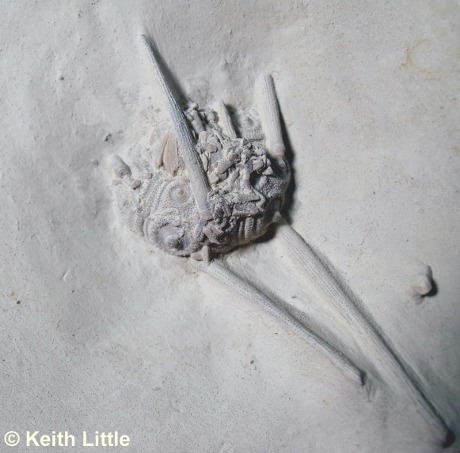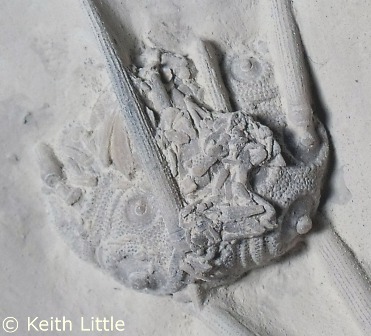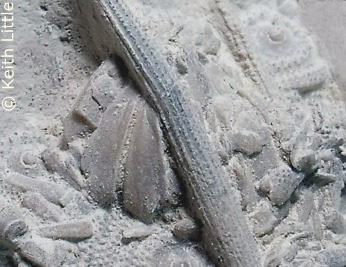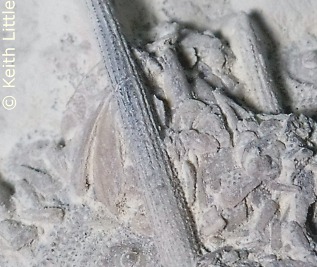
|
Temnocidaris (Stereocidaris) dissimilis (Woodward, 1856) |
A small Temnocidaris from the Grey Chalk. Primary spines are long and slender, but becoming swollen towards the test, with an ornament of fine thorns arranged in rows. Superficially they are similar to the spnes of Temnocidaris sceptrifera sceptrifera, but this form is restricted to the White Chalk, grows much larger, and has more prominent and curved thorny ornament. When primary spines are retained, then Temnocidaris dissimilis is easily distinguished from its Grrey Chalk contemporaries such as Hirudiocidaris uniformis essenensis and Tylocidaris asperula.
-----

1). Primary spine (x5.0, Grey Chalk, Dover, Kent, in the collection of Keith Little). Image © 2011 Keith Little, by kind permission.
------

2). Adoral view of an exceptionally preserved specimen retaining the lantern and articulated spines (x2.2, Grey Chalk, Dover, Kent, in the collection of Keith Little). Image © 2011 Keith Little, by kind permission.
-----
 A A |
 B B |
3). (A) Adoral and (B) ambital / lateral views of a well preserved test, somewhat obscured by primary and scrobicular spines (x3.6, Grey Chalk, Dover, Kent, in the collection of Keith Little). Images © 2011 Keith Little, by kind permission.
-----
 A A |  B B |
4). (A, B) Adapical details showing a remarkable aarticulated lantern protruding from the peristome, obscured by an association of elements including remains of the pertstomal plating (x5.5, Grey Chalk, Dover, Kent, in the collection of Keith Little). Images © 2011 Keith Little, by kind permission.